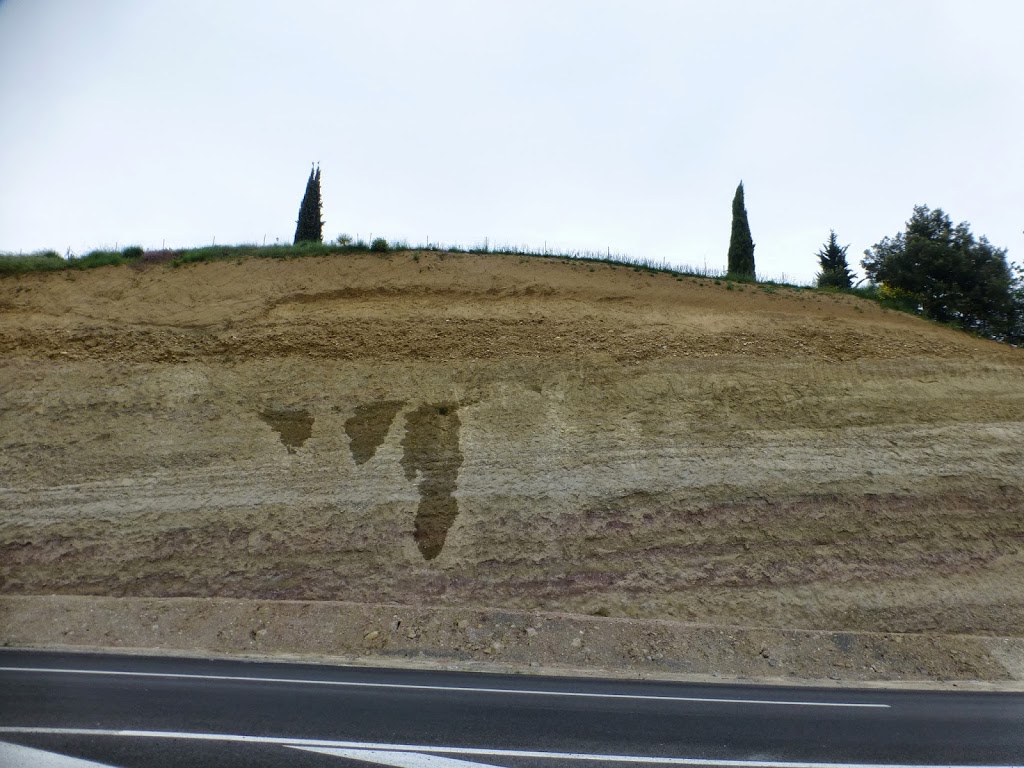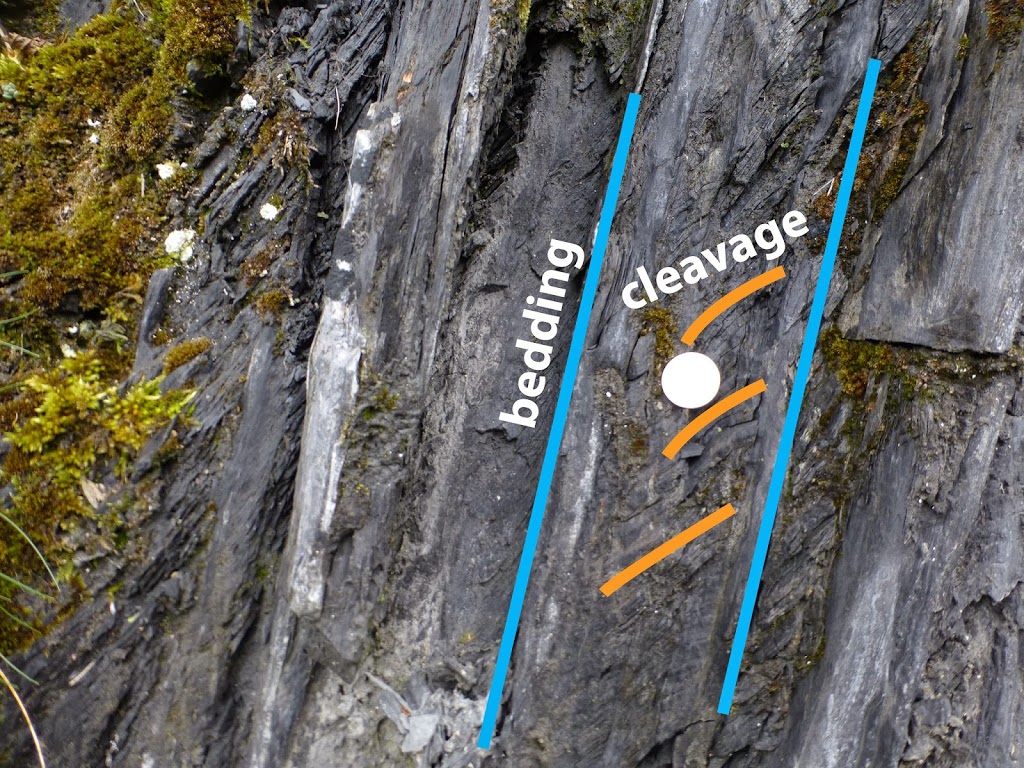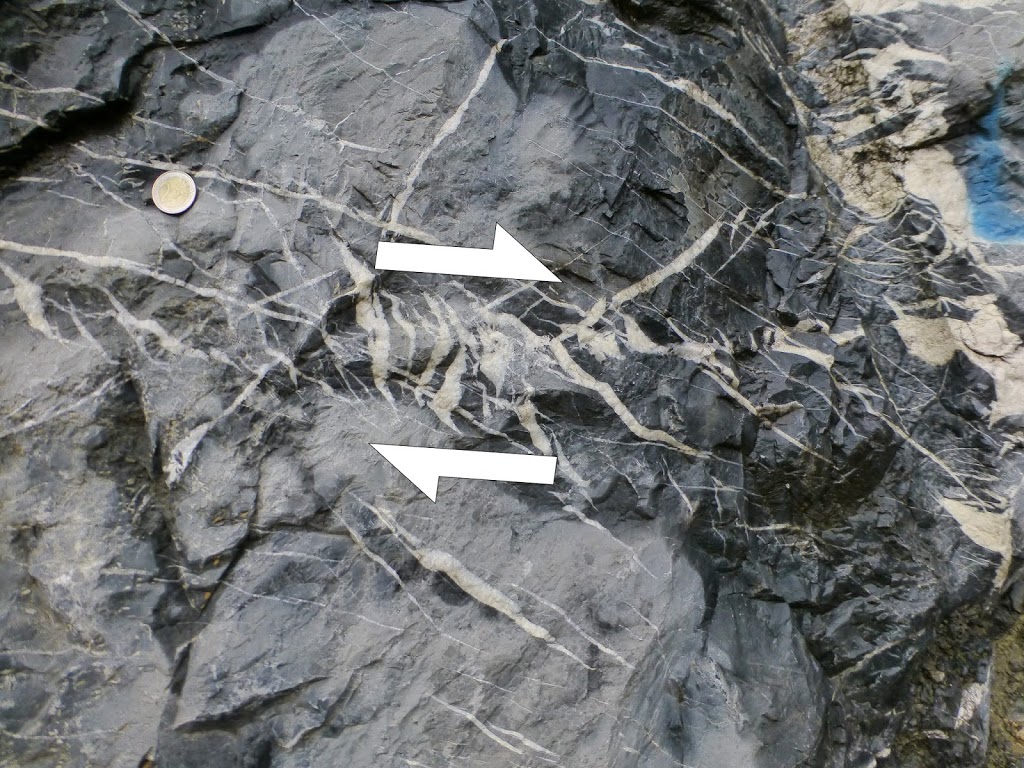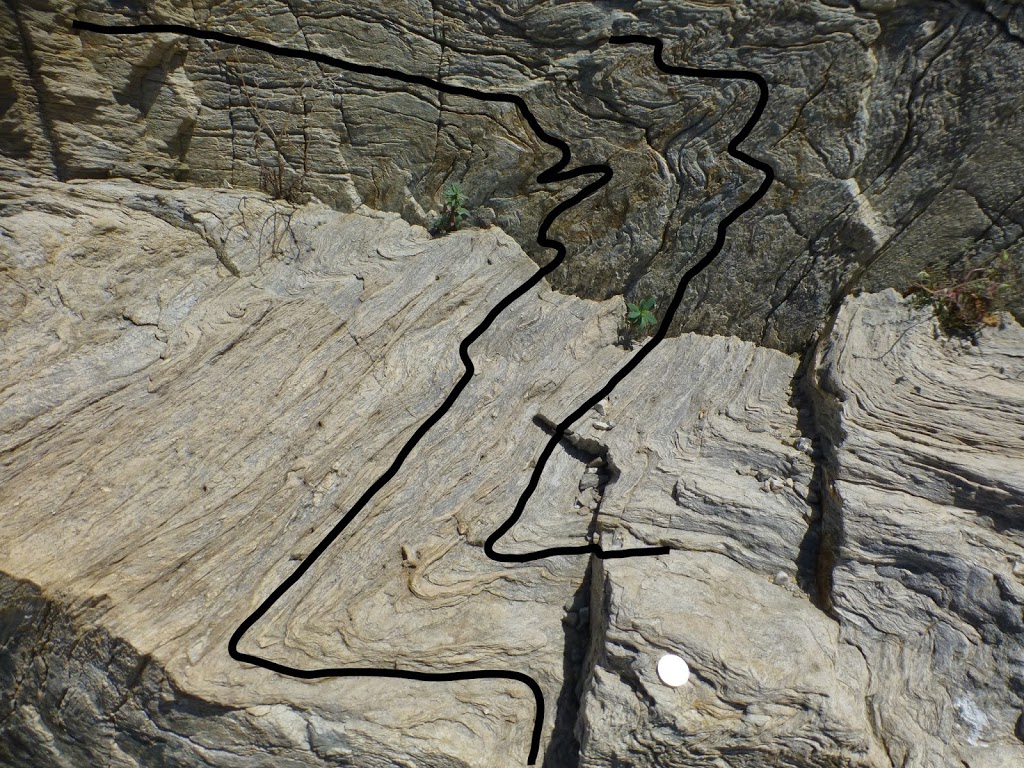A few weeks ago, I took a pseudo-holiday with the family to the eastern Pyrenees. The Pyrenees offers many (if not most) of the features seen in large collisional orogenies (e.g. Alps and Himalaya) but on a much smaller scale. Because of this, much of our understanding of orogenic basins and reactivated orogenic basement come from the very accessible, well exposed Pyrenean Orogeny. Additionally, the Pyrenees offer an unparalleled look at Medieval history (if you are into that kind of thing) with spectacularly preserved and often precariously perched castles and walled cities.
 |
| Top left: The Devil’s Bridge; top right: Foix Castle; bottom; walled city of Carcassonne |
From Carcassone we drove south through the “Molasse de Carcassonne” which consists of synorogenic sediments filling the northern foreland basins. These fluvial sediments were deposited and subsequently deformed during the Pyrenean Orogeny.
 |
| Syn-orogenic sediments near Carcassone |
Stepping further into the orogeny and crossing the transpressional North Pyrenian Fault we entered a series of nappes composed of sedimentary rocks deposited in the western Tethyan Ocean. Many of these sedimentary packages were nearly synchronous in deposition to those across the entire length of the Tethyan Ocean seen here in the Alps and here in the Himalaya.
 |
| Overturned bedding and axial planar(?) cleavage |
 |
| En echelon fracture array showing sense of shear top to the right |
Beyond the supracrustals of the Tethyan Ocean is the Hercynian basement which is comprised of the granitoids and metamorphic rocks that were formed during an orogenic event which occurred ~300 million years prior to the Pyrenean Orogeny.
 |
| Mafic enclaves in the Variscan granites. |
 |
| Ductile folds in metapsammites, Cap de Creus. |
 |
| “Le Train Jaune” |
 |
| View from our B&B window in Jujols. |
![]() This work is licensed under a Creative Commons Attribution-NonCommercial-ShareAlike 4.0 International License.
This work is licensed under a Creative Commons Attribution-NonCommercial-ShareAlike 4.0 International License.


